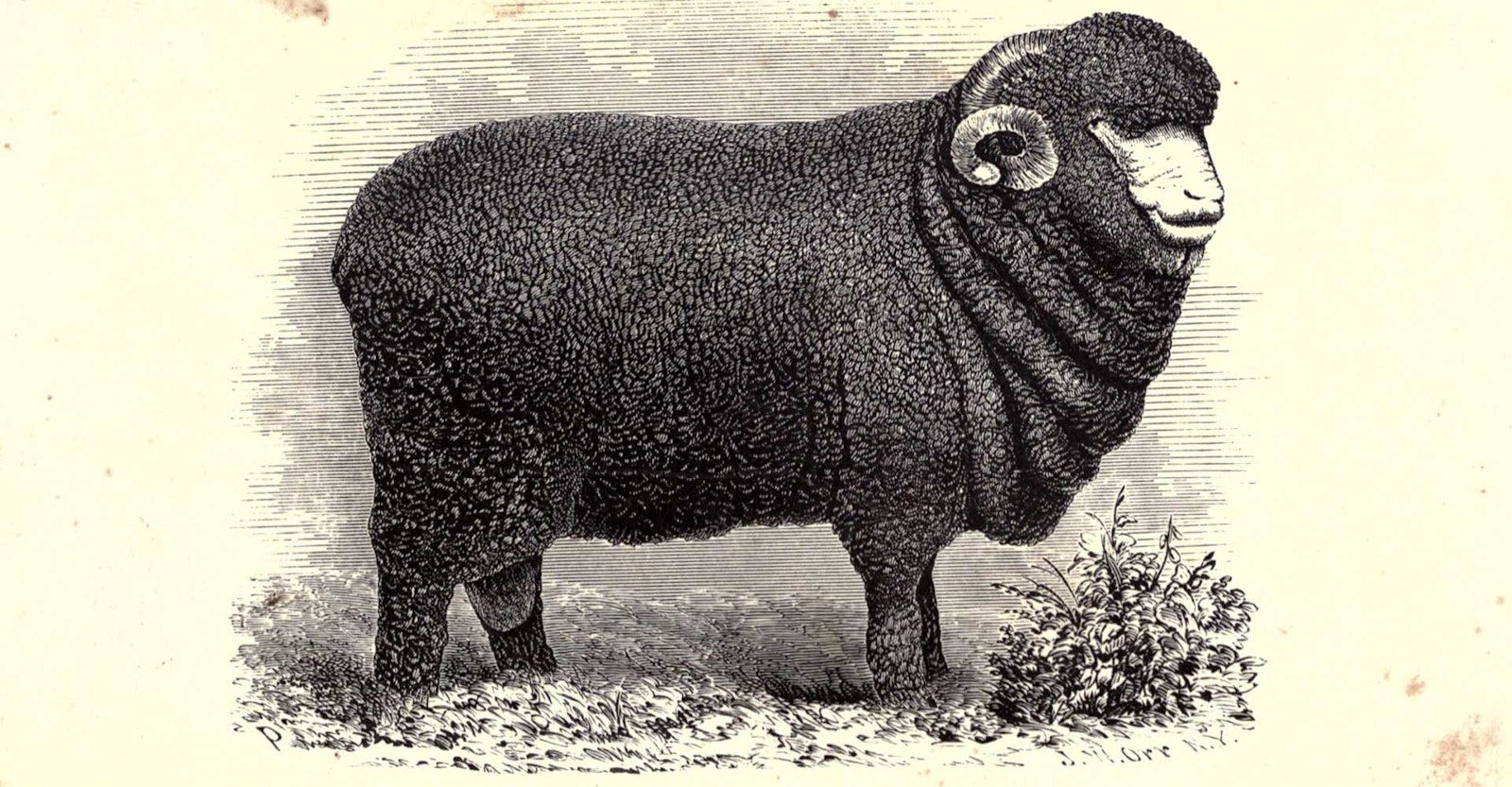Are you ready for more sheep facts? Our two previous posts discussed Merino sheep and fiber: the history of the breed, where they’re raised, and the characteristics of the fiber. In our last post about Merinos, we’ll discuss the fiber as used in yarn and textiles.
Fact #1
Within the Merino family, the fiber shows a surprising range of fineness, from ultrafine (below 12 microns) to strong (as much as 26 microns; see Note 1). Although all Merino fiber is generally considered fine when compared with other fibers, and it is considered soft enough to be worn next to the skin, there are variations in properties that are important to consider when selecting Merino for a project. If you’re looking to make a garment or accessory that will be worn without another layer, such as a delicate sweater or shawl, look for a fine (or even extrafine or ultrafine) fiber for maximum comfort and coziness. For more utilitarian pieces such as everyday scarves, a medium or strong Merino fiber would be appropriate.

Erda Kappler spun a lovely Merino roving from Australia into a sportweight 2-ply to create this Knitted Merino scarf for the Winter 1999 issue of Spin Off. Photo by Joe Coca
Fact #2
Merino fiber is predominantly white—but not exclusively! As one of the most intensively improved sheep breeds, Merino fleece has been bred for consistently white wool. It’s one of the things that makes this fiber so versatile: most of it is literally a blank canvas, so dyers can really play and experiment with color. You might be surprised to learn, though, that some shepherds work to develop color genetics within their Merino and Merino-family flocks, producing a range of lovely natural hues.

Fox & Hound Merino Sheep produces both white and naturally colored Merino sheep on their farm in Western New York. Photo courtesy of Fox & Hound Merino Sheep, foxandhoundmerinosheep.com
Fact #3
Merino wool felts easily, so you should avoid agitation when cleaning or handling Merino fibers, yarns, and fabrics unless you're working with superwash wool. Until recently, it was difficult to find superwash wool that wasn't Merino, but you may spot superwash top made from Targhee, Bluefaced Leicester, Corriedale, and other wools.
Looking for more ways to explore Merino? More on this versatile fiber can be found in our Spinning Fine Wool ebook and our Evolution of Wool video.
Yours in fiber,
Rachel
Rachel Koon is a former managing editor of Spin Off magazine.
Notes
- Deborah Robson and Carol Ekarius, The Fleece & Fiber Sourcebook: More Than 200 Fibers from Animal to Spun Yarn (North Adams: Storey Publishing, 2011), 135.

